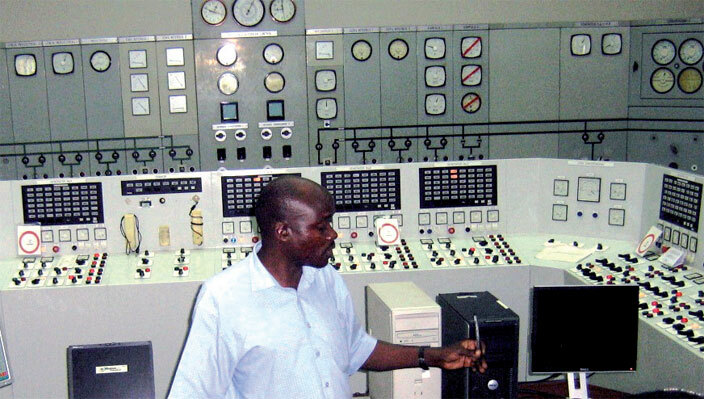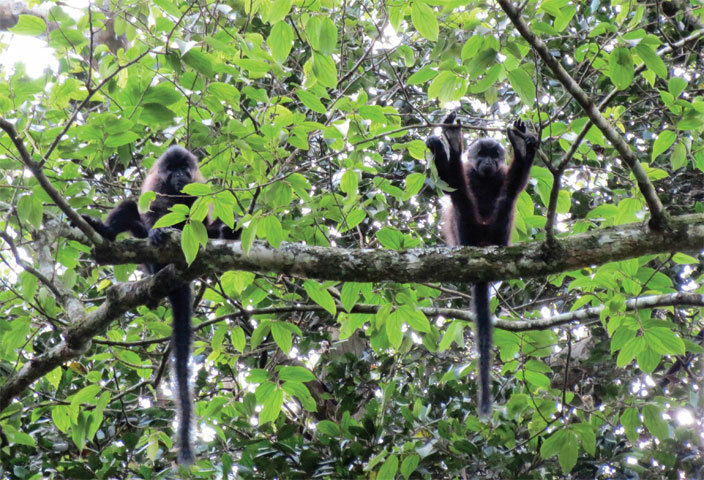ERA supplement
May 31, 2016
Focus on Electricity generation, transmission and distribution

Boosting hydro power supply with bagasse
By George Bita
Call it an irony, but bagasse, the waste product from sugarcane crushes, is raw material for the generation of electric power.
Currently, the fibrous residue, to a certain extent, is the reason Ugandans are experiencing less blackouts also known as loadshedding. Suzan Kagoya, a resident of Wairaka trading centre, says lights never go out in the Kakira neighbourhood due to the locally generated electricity.
"Whether it is day or night time, a stable power supply is guaranteed with no cases of intermittent supplies that usually damage electronic gadgets such as televisions and radios," Kagoya says.
According to her, the last time she ever witnessed a power cut in the area was 2004 when she was preparing for Senior Six final examinations at Kakira High School. Mayur Madhvani, the managing director of Madhvani Group that owns Kakira Sugar Works, says the company started producing electricity from bagasse in 2005.
The Kakira power station is located 16km to the northeast of Jinja municipality in Kakira town. It is adjacent to the sugar factory, making acquisition of the ‘wastes' very easy.
 Madhvani (left) taking Energy PS Kaliisa Kabagambe around the bagasse plant
Madhvani (left) taking Energy PS Kaliisa Kabagambe around the bagasse plant
How bagasse works
Madhvani says in the beginning, Kakira had two 20-bar steam-driven turbo-generators of 3MW and 1.5MW respectively boosted by five standby diesel generators.
"Bagasse is burnt to produce heat that is subsequently exposed to water, prompting boiling. At boiling point, high pressure steam rises so as to turn turbines generating power,"
he narrates.
Madhvani says the sugar factory needs power and steam, which is obtainable from the waste product called bagasse. "The high pressure steam is utilised in turning factory mill turbines plus turbo-generators to make electricity. Afterwards, the low-pressure steam helps in the sugar-making process," he says.
Madhvani believes Kakira is blessed for being able to make its own power that inevitably elevates this establishment to a self-sufficient status.
"After installation of a new boiler machine in mid 2012, the electricity supplied to the national grid rose gradually from 6MW to 30MW. Currently, the amount supplied is about 52MW," he adds.
Madhvani says the overhaul kicked off in 2006 with the installation of a new 16MW generator that went online the following year.
"In addition, a 14km distribution line for grid supply at 33KV, was set up to link to the main transmission lines," he adds. As part of the expansion works, a new switchyard took shape at the power plant to efficiently co-ordinate the electricity supply.
 The new switchyard at Kakira power plant in Jinja
The new switchyard at Kakira power plant in Jinja
Contribution of bagasse
According to Julius Wandera, an official with the Electricity Regulatory Authority, Madhvani tops the private contributors to the national grid with its 50MW.
"Due to a deficit in electricity generation in Uganda, emergency measures were undertaken to
supplement it. However, the use of diesel or fossil fuel with accompanying offensive carbon
emissions spelt doom for the environment and mankind," Wandera says.
Hence the search for options to avert this situation, bearing in mind the need to increase the renewable energy supply with less fossil fuels use.
Wandera explains that the electricity used in Kakira is produced from renewable biomass energy source.
"In mid-2012, Kakira launched the expanded co-generation project that was made possible with a grant of $3.3m in 2008," he says. Kakira is among the beneficiaries of the electrification for rural transformation fund to produce electricity through co-generation.
Records show that the cogeneration meets all the energy requirements of Kakira factory complex, plus the town on a 24-hour basis as well as provision for the national grid. Rebecca Sabano, a resident of Kakira town says gone are the days when the urban centre would go without electricity for hours.
"In this area, those dealing in paraffin lamps or candles must be making losses. The streetlights are equally as bright, which enables us to trap white ants and grasshoppers for sale when the season comes," Sabano adds.
Kinyara Sugar Works Limited located near Masindi town in Masindi district in western Uganda
owns Kinyara Power Station, a 14.5MW bagasse-fired thermal electrical plant.
Even if it was a public establishment when it was opened in 1969, the Government has, over the years, sold off shares to private investors. Records indicate that by 2011, the Rai Group, owning the majority shares, agreed to commit $55m within a three-year period to, among others, boost electric power production.
The target was to expand power production capacity to 40MW by 2015 of which 22MW was destined for the national grid.
"Kinyara Sugar Works is the other private power supplier presently adding about 6MW to 7MW to the national grid," Wandera says.
He says the remaining megawatts are utilised at the factory to offset the expenditure that would have been incurred in paying exorbitant electricity bills.
"Sugar factories operate on a 24- hour basis with both day and night shifts. At the end of the month, the power used would certainly be in millions of money," Wandera says.
He argues that the heaps of bagasse piling up would equally be huge within a short period of time had they not to be immediately rechannelled into power plants on
location.
Wandera adds that Mayuge Sugar Limited and Kaliro Sugar Limited have already acquired licences to generate electricity from bagasse. He says they release enough waste from the cane-crushing process to ably operate bagasse power plants at their respective locations.
"We expect contributions from the two Busoga-based sugar factories in the near future as all
formalities have been taken care of," Wandera discloses.

See the light in solar, conserve the environment
By switching to solar fully, Kampala Capital City Authority will save approximately sh600m every year on electricity bills for street lighting alone, writes Gilbert Kidimu
Kampala residents have over the past couple of months witnessed the removal of electric street lights and the installation of solar lamps in divisions such as Nakawa and Makindye.
This is in pursuit for lower electricity bills and ecofriendly options. You can already see bright, solar street lights along Jinja road, Nsambya, Namuwongo, Muyenga Bukasa, Kabaka Anjagala, State House Close, among other streets. When completed, Kampala will have a network of 1170 street solar lamps positioning Uganda's capital as the city with the biggest solar lighting network in the region.
It will therefore have the biggest green footprint in road furniture in the region. However, this costly investment is not only aimed at saving mother planet. KCCA spends an average of sh200m currently in monthly bills on street lights.
By switching to solar fully, the city authority will save approximately sh600m every year on electricity bills for street lighting alone, according to Robert Kalumba, KCCA's deputy spokesperson. KCCA's development also means that the burden on the already overwhelmed national power grid will be reduced.
 The solar street lights along Kabaka Anjagala Road not only light up the royal stretch, but also beautify it. These lights are eco-friendly and cost effective.
The solar street lights along Kabaka Anjagala Road not only light up the royal stretch, but also beautify it. These lights are eco-friendly and cost effective.
African economies may be finally starting to take off, but continued growth and quality of life are being jeopardised by lack of power. The International Energy Agency (IEA) estimates more than a million people in sub-Saharan Africa lack access to electricity, with the electrification rate as low as 14.2% in rural areas.
In Uganda, the statistics are worse. According to the Rural Electrification Agency's executive director, Godfrey Turyahikayo, current national access to electricity is 12%.
Emmanuel Mangeni, a liquid petroleum gas energy consultant, brands the existing energy challenge in the country a "crisis of cooking energy."
"About 93% of Ugandans survive on wood and charcoal for their cooking needs, while 1% can afford liquid petroleum gas," he observes, adding that in a modern society, wood and charcoal, which are classified as biomass energies, are supposed to be preserved by the state and the citizens as well as environmental conservationists.
"It is the reason the annual Global Earth summit is a hit across the globe and the very reason the 17 newly passed United Nations Social Development Goals (SDG's) 2030 have assigned "GOAL 7: To ensure access to affordable, reliable, sustainable and modern energy for all," Mangeni says.
In spite of efforts to get people onto the grid, population growth has meant these fi gures stay fairly steady, with the majority of people still using costly and unhealthy forms of energy for cooking and lighting. It is for this reason that solar energy is fast becoming the alternative source of energy in Uganda.
 Mangabey monkeys in Mabira Forest. Using sources of energy other than wood and charcoal will help preserve the environment
Mangabey monkeys in Mabira Forest. Using sources of energy other than wood and charcoal will help preserve the environment
Solar power, categorised as clean energy, is tapped from the sun. Solar power use is a major part of green living world over as a replacement of traditional fossilfuel generated electricity.
Its use is both environmentally-friendly and cost-effective over the long term. According to Yingli Solar, the world's largest solar company located in China, 10 GW of solar panels can produce 11 billion kilowatt hours of clean electricity, saving 4.4 million tonnes of coal used thus reducing 10.3 million tonnes of carbon emissions, equivalent to reforestation of 190,000 hectares.
Martin Erone, the manager of legal services at Uganda Electricity Transmission Company (UETCL), says renewable energy is the only way to go. "The demand for power increases everyday yet that demand can not be fully met. We need constant investment in energy and renewable sources, such as solar," he remarks.
Any effort that can reduce the pollution to the environment helps to save the earth. Solar panels are able to harness the energy from the sun and convert it to electricity. Therefore, the use of solar panels will save the environment.
Uganda has made signifi cant progress on its renewable energy, through the GET FIT programem, which supports the development of climate resilient lowcarbon energy solutions. Recently, a 10MW solar power plant was launched in Soroti, aimed at increasing power access in the district.
The power produced from the plant is expected to be added to the national grid in July and will power 40,000 homes and businesses in an area where electricity access is still low. The solar power plant, which will be the fi rst in Uganda to supply electricity to the national grid, is being built by Access Solar Power Limited, at $19m (about sh63.7b) and will be completed in six months.
ADVERTISER
Uganda Energy Credit Capitalization Company
Electro-Maxx
Electricity Regulatory Authority
